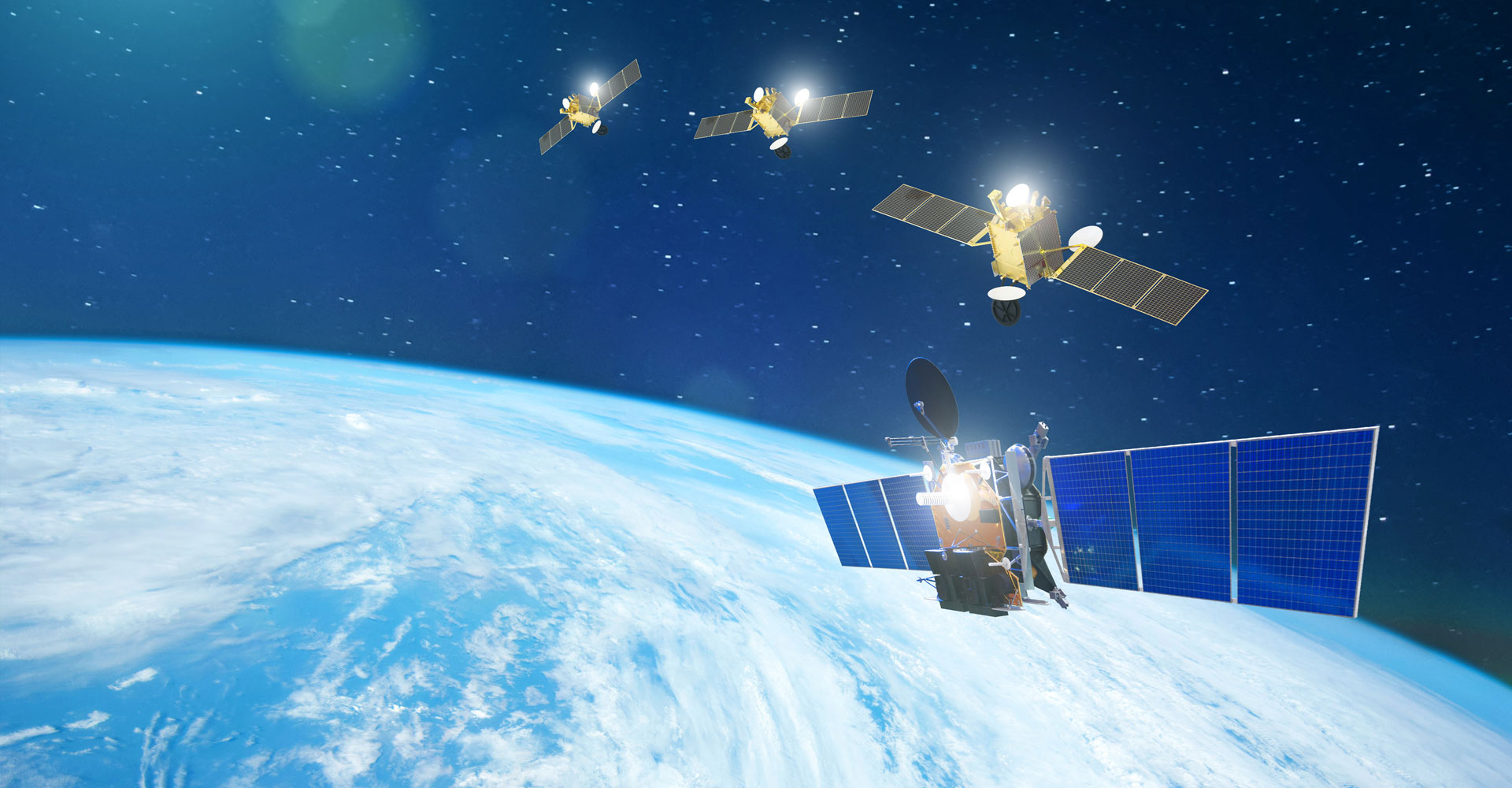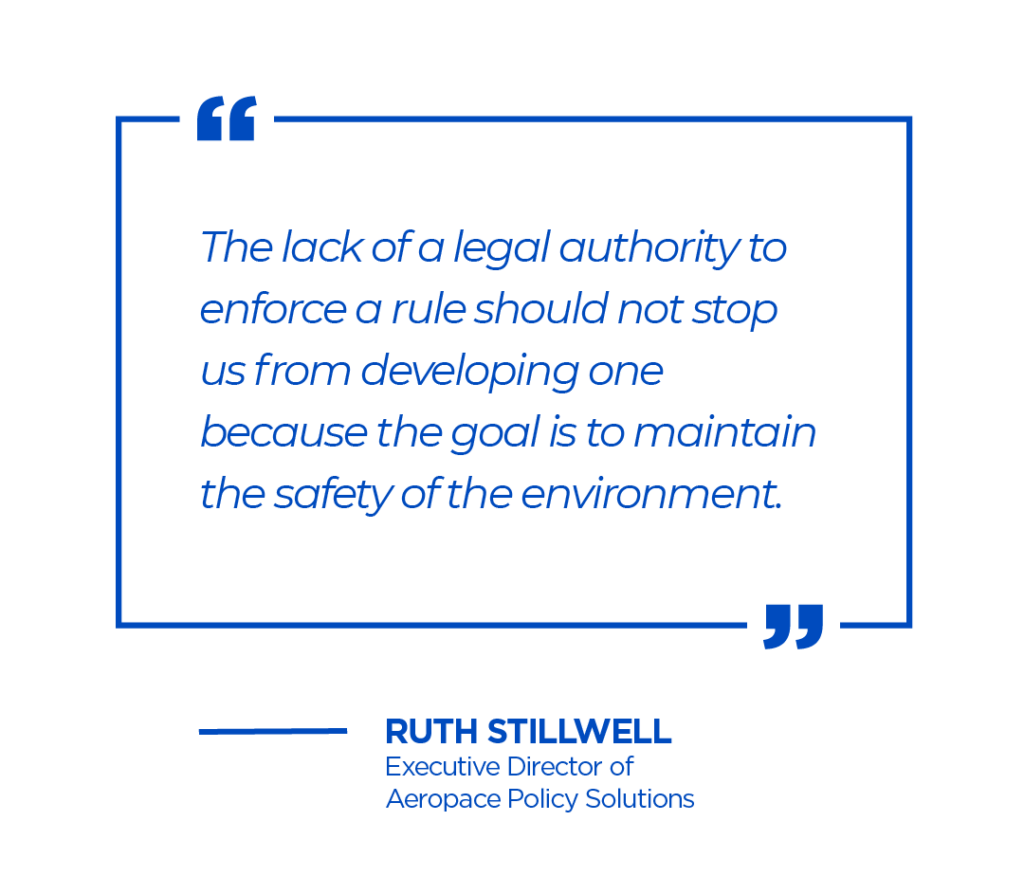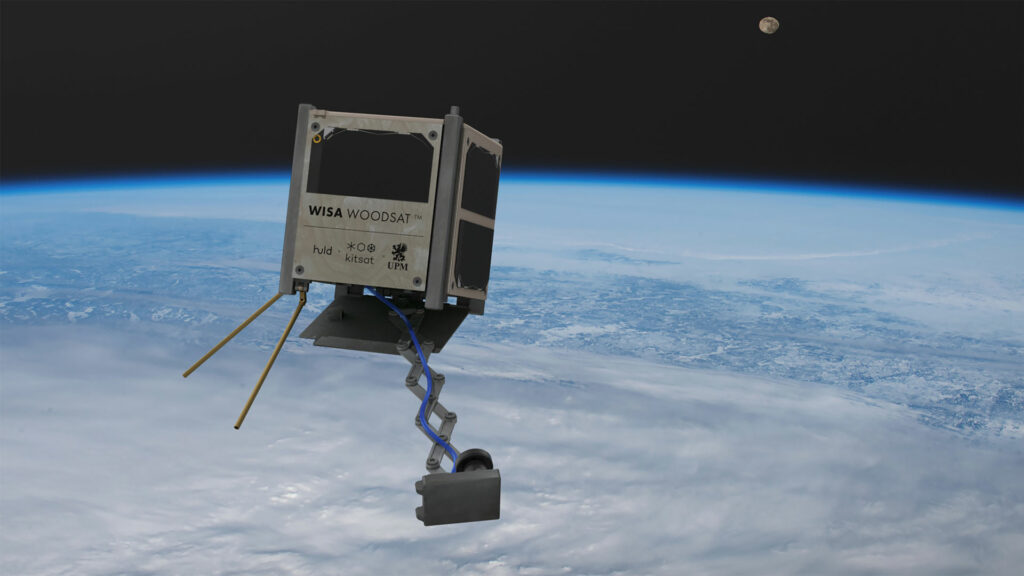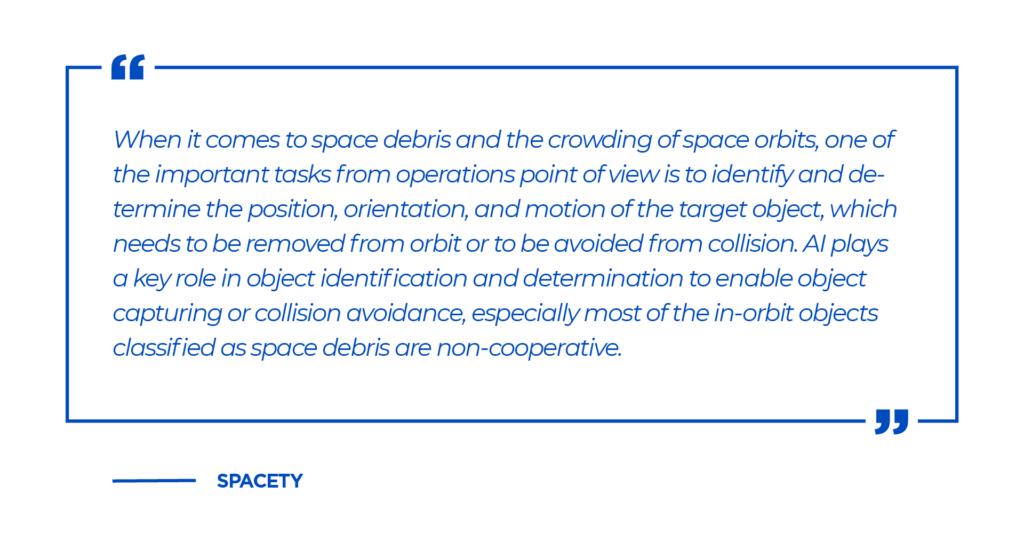Space exploration is in danger. The cause of it? Us. As seen in our previous article, blinded telescopes, ozone holes, earth geoengineering, and a LEO so full of debris we cannot access space are the key issues of satellite mega-constellations.
Nevertheless, even the most polyhedric challenges have a solution. And these are no exception. Regardless of whether space is indeed the next El Dorado of business ventures, both the market and the players involved in it are treating it as such. This leaves little to no room for even the thought of reducing activity. However, even if there is no stopping the snowball once it starts rolling, landslides can be diverted as long as the work is done preemptively.
Orbital traffic management
Much like roads, the Earth’s orbits are abundant but limited.
This also means that, like traffic, orbits can and should be controlled, monitored, and managed. In fact, it is no coincidence that, after the several conjunctions (a close approach between two objects in space usually at very high speed) seen by the field in recent years, attempts are being made to develop “right of way” rules.At this year’s AMOS Conference (Advanced Maui Optical and Space Surveillance Technologies), the Executive Director of Aerospace Policy Solutions Ruth Stilwell said that it is unlikely that there will ever be a supervisory authority to manage space traffic. This is an issue she addressed also in a 2019 seminar. However, she did state that this shouldn’t stop us from developing rules.
The problem is how to get there. Maneuvering requires priority rules because it comes at a cost: it affects the satellite’s lifespan by consuming propellant, and it can cause temporary loss of service. These two factors often cause satellite operators to stall and avoid the costs of of maneuvering by forcing the other party involved in a conjunction to do it instead. However, the NASA-SpaceX agreement is still one step forward. Even though they may not bring us any closer to having a set of standards accepted by every player in the space industry, it may very well indicate a future trend.
Ideas for Astronomy
The unfortunate truth is that the only way to achieve zero impact on astronomical observations is to stop launching new satellites into LEO. But we’re far beyond that point. At the same time, however, this doesn’t mean that we are out of options. Possible measures involve darkening satellites by lowering their albedo, shading reflected sunlight, or controlling the satellite’s altitude so that it reflects less sunlight to Earth. Another set of solutions could come through removing or masking satellite trails in images or by avoiding them completely during observations with the use of accurate ephemerides (sets of data that provide the assigned places of a celestial body for regular intervals).
According to the American Astronomical Society, an effective way of facing the issue could be software. For example, through an application able to identify, model, subtract, and mask satellite trails in images on the basis of user-supplied parameters. Alternatively, a solution could be provided by software that predicts the time and projection of satellite transits through an image given the celestial position, time of night, exposure length, and field of view based on the public database of ephemerides.
Whatever the solution is, it will require close-knit collaboration between satellite operators, observatories and, most likely, software developers.
The challenge of de-orbiting
The numbers we introduced in our previous article are relevant not only when it comes to orbits being overcrowded. A high risk of collision is also associated with de-orbiting. For example, SpaceX will actively de-orbit its satellites at the end of their 5–6-year operational lives. This process takes around six months. Thus, about 10% will be de-orbiting at any time. If other companies do the same, thousands of de-orbiting satellites will be slowly passing through the same congested space, thereby posing collision risks. It is necessary to track de-orbiting satellites so that operational satellites can maneuver. However, we saw that this requires something far from obvious: cooperation and communication between operators. This may still be the best solution considering that, according to SpaceX filings, collision avoidance maneuvers can, in fact, maintain collision-free operations.
Nevertheless, even with SpaceX showing leadership intentions when it comes to space preservation, it is all but granted that other players will develop similar self-regulating rules or, at the very least, comply with those set by others. However, this doesn’t solve the problem of aluminum oxide, its atmospheric effects, and the danger posed by that portion of satellite material that doesn’t disintegrate in re-entry. One proposed solution to these problems, which is also one that seems to have gone a long way since its conception, is the wooden satellite. The main example of this is currently the WISA Woodsat by the company Arctic Astronautics, which was developed alongside ESA. We reached out to them regarding the issue of alumina and their mission as a company: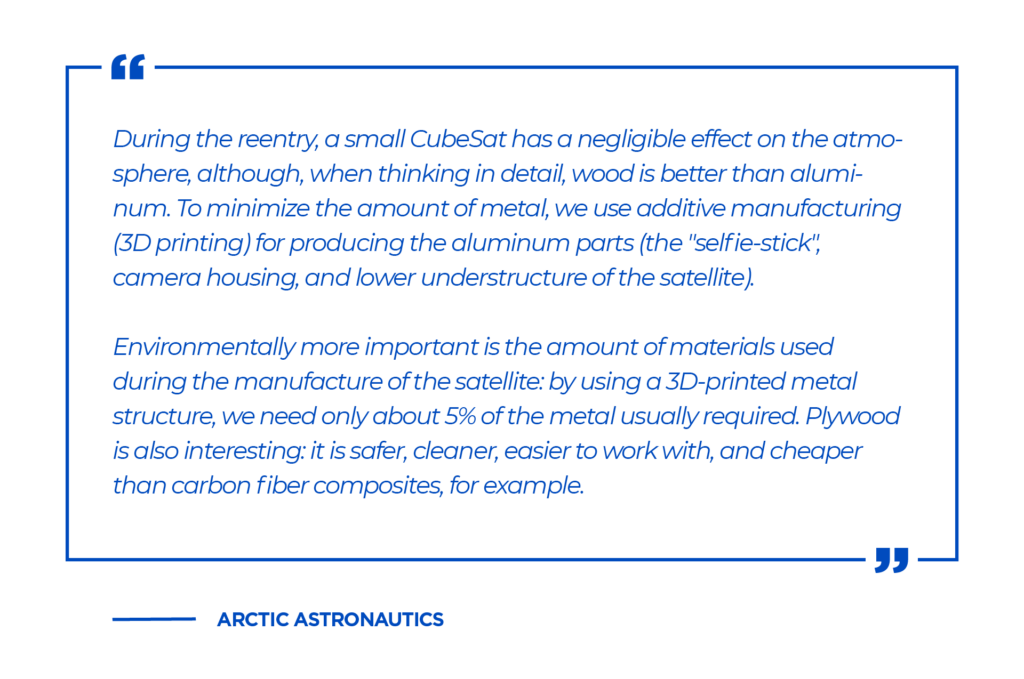
We dove deeper into this topic with Arctic Astronautics. We wanted to know how a wooden satellite would affect the industry as well as how it could contribute to the space debris issue. Here’s what they told us: “Indeed another interesting issue is also the time the satellite will spend in orbit. We’ll be a very light satellite – thanks to plywood – weighing less than one kilo. This means we’ll come down sooner, only about 3 years from launch. This helps with the space debris problem: we won’t be a problem for a long time!”
The WISA Woodsat is a plywood creation by the Finnish company Arctic Astronautics. They are studying mostly the behavior of plywood in space conditions and how it makes the construction of a satellite better, cheaper, and more environmentally friendly. The Woodsat is scheduled for deployment in late 2021 through a Rocket Lab launch. In 2020, a wooden satellite concept was also in development in Japan.
Maneuvering away from the Kessler Syndrome
Wood-based satellites are one possible solution to the multifaceted space debris issue. But we can also use technology to avoid creating more debris.
This is where Artificial Intelligence – more specifically, Machine Learning (ML) – enters the conversation. In 2019, ESA was developing a collision-avoidance system to automatically assess the risk and likelihood of in-space collisions. It is also meant to improve the decision-making process on whether a maneuver is needed. Despite the financial worries of players when it comes to these events, collision avoidance maneuvers integrate well with standard satellite operations. They tend to be very small. In most cases, they can be conducted in a manner that does not waste propellant resources.
Orbit prediction is the basis of collision avoidance solution. In physics-based models, it is generated by propagating the current state of the space object using a particular dynamic model to the desired future epoch. Orbit prediction errors are usually inevitable because the dynamic model approximates the real physics, and the estimated state has errors resulting from both the measurements and the estimation algorithm.
In contrast, Machine Learning-based systems can make predictions without exact modeling of the space environment or of the objects. That’s because the learning is based on large amounts of historical data similar to human cognition in learning from experience to predict future events. The ML approach can be tasked with finding only the incremental corrections to the physics-based prediction, thereby reducing the dimensionality of the learning task.
Another solution could be implementing a collision-avoidance system using neural networks and relevant ML techniques.
This possibility was explored by Kabir et al. who used an ESA dataset of events of risk assessment to explore two models: a primary one based on General Regression Neural Networks (GRNN) and secondary models based on Neural Networks, Random Forrests, and Support Vector regression techniques. This system predicts the collision risk percentage between target (a satellite of interest) and chaser (space debris or another satellite) objects. The predicted risk enables the target to maneuver accordingly and ultimately avoid collision with the chaser object. According to the authors, “the model predicts the risk of collision with 89% accuracy, and this 89% risk can give a sufficiently high confidence factor to the concerned authority to take necessary evasive maneuvers.”
Considering all the areas we’ve touched upon as of this point, it seems safe to assume that software, in its various technology-enabled iterations, will be a key factor in saving space exploration. Yet, in all of this, there’s one area that seems to be missing: regulation. Regarding AI and space debris, we asked Spacety how important the role of AI will be in developing effective collision-avoidance software:
A wild, wild West
In 1967, the Outer Space Treaty became the cornerstone of the international intention to protect space declaring it free from national appropriation claims and open to non-discriminatory scientific exploration. However, no matter how visionary it was, lawmakers back then had no possibility to predict the future development of the industry. More importantly, and despite the best intentions of the treaty, international law is, by definition, non-binding: there is no supervision of treaties and rarely any actual enforcement of their provisions. Furthermore, like we saw earlier, there is already consensus about the fact that there will not be an overseeing power in space matters.
This leaves us with countries finding strategy loopholes for military applications of space (in case you missed it, the US has now a Space Force and China has anti-satellite weapons). But it also has implications for the private industry: The consequence is a predominant, industry-wide scarcity mindset worryingly similar to the colonization rush of our darkest centuries. As space increasingly becomes millionaire territory, it will be necessary to modernize both international space law and national space policies while maintaining the cooperative and universalistic human view of space found in the Outer Space Treaty.
Despite these premises, we’re far from lost. Lawmakers and national leaders are still able to push towards a common effort of treating space matters with the same urgency we dedicate to the environment. It will be also essential to collaborate (and demand the cooperation of the private sector) if we want to make this collective effort a reality. Especially now that the times of space access being a governmental prerogative are long gone.
Dark skies and shining stars
Many would argue that perception is reality. Hard to prove them wrong considering how easy it is to paint the future the colors of a grim dystopia.
But after going through all the topics we’ve touched upon here, it seems safe to assume that we’re far from lost. Just by looking at this article’s sources, it is quite apparent that these topics are vastly covered and discussed in the industry. Software, in its various technology-enabled iterations, will be a key factor in saving space exploration. It will thus be private initiatives that make satellite constellations more sustainable. Even more effective will be the international and cross-industry regulations we’ll see in the upcoming years.
As we said in the previous installment of this series, there’s no shortage of parallels to draw between space and the climate. The reality is that we can’t lie to ourselves: the threats are real and imminent. However, the solutions are in the making, and we believe that through technology-enhanced cooperation, we’ll be able to pull humanity out of yet another (potential) crisis.
After all, it is in the sky’s darkest nights that we see the brightest stars.
Subscribe to our Monthly Wrap Up if you don’t want to miss the next article of the series!
